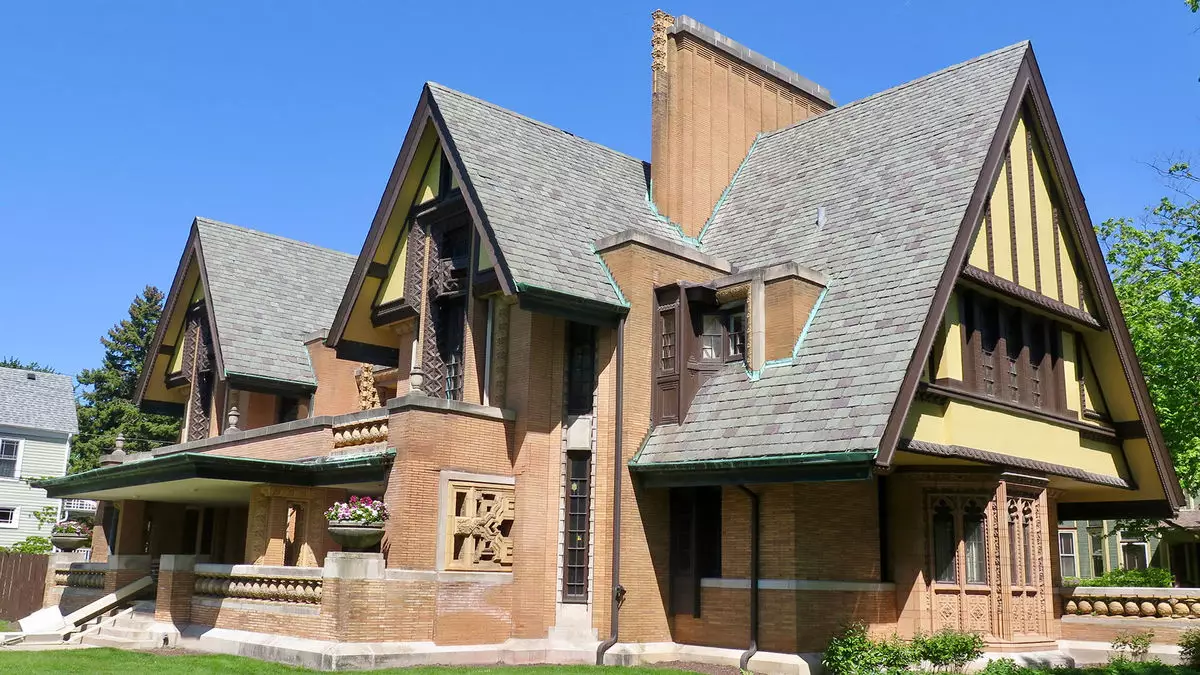As someone who spent my formative years in Illinois, the allure of the Windy City and its surrounding neighborhoods was a constant background melody during my childhood. Visits to family in Oak Park and Hyde Park laid the groundwork for a love of architecture, but it wasn’t until a recent cruise that I truly appreciated the creations of Frank Lloyd Wright. This voyage unfolded with an exceptional partnership between Victory Cruise Lines and the Frank Lloyd Wright Foundation, shining a spotlight on the pioneering architect’s local masterpieces. It was an educational journey through time and design, effortlessly merging luxury travel with cultural enrichment.
Wright’s influence isn’t merely academic; it’s woven into the fabric of American culture. The recently designated UNESCO World Heritage Sites, which include several of Wright’s architectural treasures, act as a testament to his craftsmanship and innovative spirit. With eight landmarks in the United States receiving this honor, the opportunity to experience his work, including the iconic Unity Temple in Oak Park and the magnificent Robie House in Hyde Park, is a unique privilege that educational cruise excursions are keen to provide.
Immersive Experiences on the Great Lakes
Victory Cruise Lines has meticulously designed their shore excursions to offer travelers an immersive taste of the Great Lakes’ architectural bounty. While many cruise lines visit renowned cities, it’s the dedication to rich, contextual tours that sets Victory apart. Kari Tarnowski, the Vice President of Marketing, emphasizes this philosophy by stating that excursions are not merely add-ons but central to the entirety of the cruise experience. Her assertion rings true when one considers the depth of the architectural insights available through knowledgeable guides at each tour stop.
The combination of expertly curated, immersive tours with engaging narratives opens up a world of discovery. Enthusiasts of design and architecture can appreciate the unique stories behind each structure, learning about Wright’s evolution as a designer and the socio-economic conditions of his time. Unlike a brief, cursory glance, this experience invites travelers to soak in the atmosphere and details that define great art and design.
Historic Sites and Their Architectural Significance
The architectural bounty of Wright’s work is not limited to mere aesthetic beauty; each site encapsulates a point in history, reflecting the societal currents that influenced its creation. Oak Park’s Unity Temple, completed in 1908, exemplifies this narrative. Crafted with a focus on both aesthetics and budget, Wright utilized concrete—unconventional for its time—to forge a space that bridged the needs of the Unitarian congregation with innovative design principles. The outcome isn’t simply a structure; it’s an embodiment of Wright’s philosophy of harmony between nature, man, and the built environment.
Similarly, the Robie House serves as a monumental milestone in the evolution of architectural design. Celebrated for its integration of form and function, it boasts an intricate design featuring 175 doors and windows—challenging the traditional expectations of residential architecture. The home is not just a visual masterpiece; it signifies a turning point towards modern architectural ideals. The story of its near-demolition and subsequent preservation effort even features Wright himself, revealing the personal stakes the architect had in his creations.
The Enriching Partnership of Education and Exploration
Victory Senior Management’s collaboration with the Frank Lloyd Wright Foundation signifies a broader trend in travel, where educational experiences merge with leisure. The recognition of Wright’s architectural importance invites not just admiration, but an appreciation for the cultural legacy embedded within these buildings. As Tarnowski puts it, these enriching experiences provide travelers with an authentic connection to local narratives, all without the need for lengthy international travel.
Engaging expert interpreters who describe the historical significance and stylistic elements of each site makes all the difference. The city itself becomes a classroom—each corner imbued with lessons in aesthetics, history, and architectural philosophy. This approach is particularly favorable for those who may find themselves hesitant to delve into the depths of design history; immersive tours soften the learning curve by making architectural discourse accessible and enjoyable.
The Call of the Architect’s Vision
Visiting these architectural landmarks through a cruise not only enhances one’s appreciation of Wright but also sheds light on the legacy of Midwestern ingenuity and creativity. In our modern age, where travel experiences can often feel superficial, the experiential journey through Frank Lloyd Wright’s work compels us to confront not only the structures but the conditions that inspired their creation. It beckons us to recognize the significant cultural narratives within our local history, proving that beauty, innovation, and community are found right in our backyard.
A passionate embrace of architecture meets the thrill of exploration, ensuring that a journey along the Great Lakes isn’t just about the destinations but the transformative nature of the experiences encapsulated within them.

